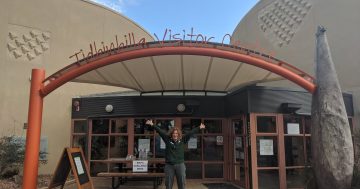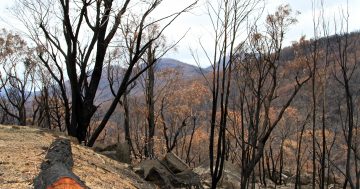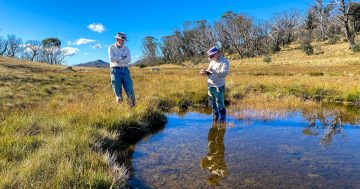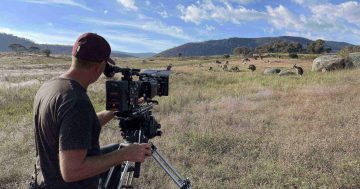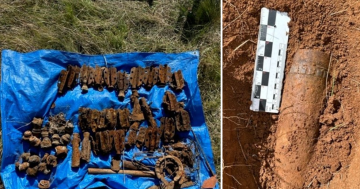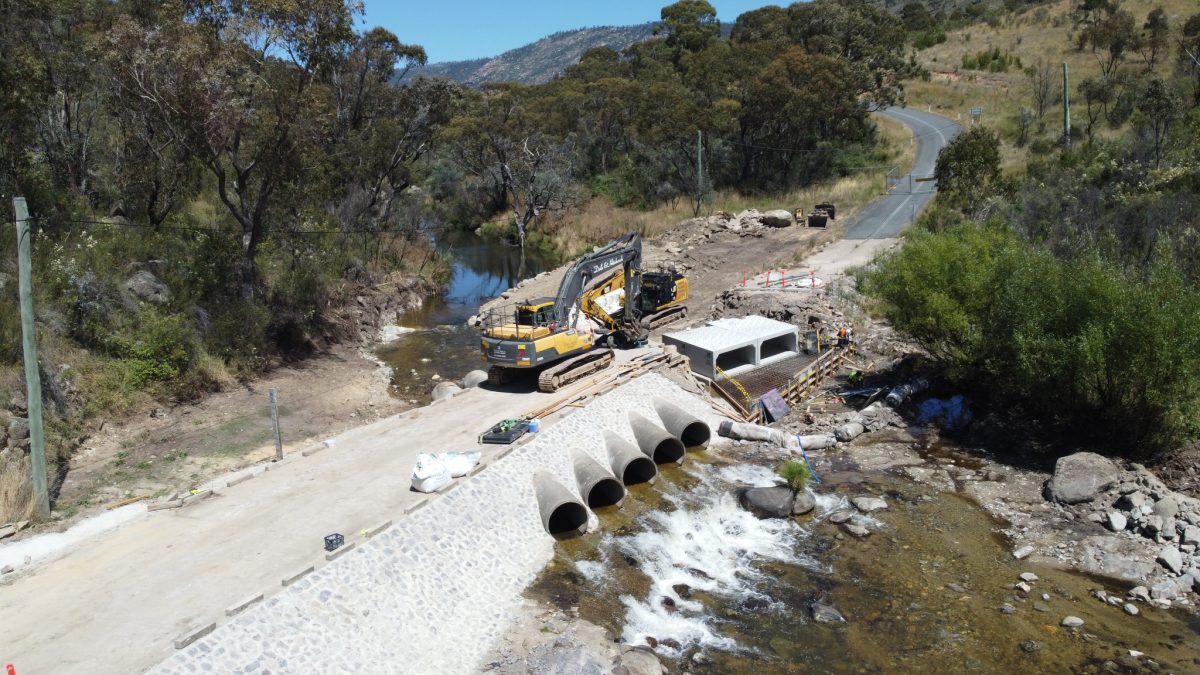
Repairs to Rocky Crossing in the Orroral Valley will be finished by late April. Photo: ACT Parks and Conservation.
It was where an army helicopter accidentally set dry grass alight with a hot landing light, starting a bushfire that burnt nearly 90,000 hectares of ACT farmland and nature reserve. More than three years on, the Orroral Valley is about to reopen.
“We know it’s been a long wait (it has for us too!), and we’re very grateful for your patience,” ACT Parks and Conservation said in a social media post.
“We’re working towards opening the Orroral Valley in mid-May for camping and bushwalking.”
The valley lies to the southwest of Canberra, near Fitz’s Hill. The Orroral Campground features toilets, fireplaces, picnic tables and gas barbecues (fees apply) and is 19 kilometres from the Namadgi Visitor Centre via the sealed Naas, Boboyan and Orroral Roads.
A number of walking trails in the valley including the ‘Australian Alps Walking Track’ and ‘Nursery Swamp’ take in the Murrumbidgee River and the Orroral Homestead. The former Orroral Tracking Station Site is a short, six-kilometre drive away.
The final stretch of road into the valley runs over the Murrumbidgee at Rocky Crossing and this was destroyed by flooding. The bushfire had left the landscape bare and exposed to the sopping wet La Nina weather that followed, causing “severe erosion”.
A spokesperson for the ACT Government said the crossing was “destroyed”.
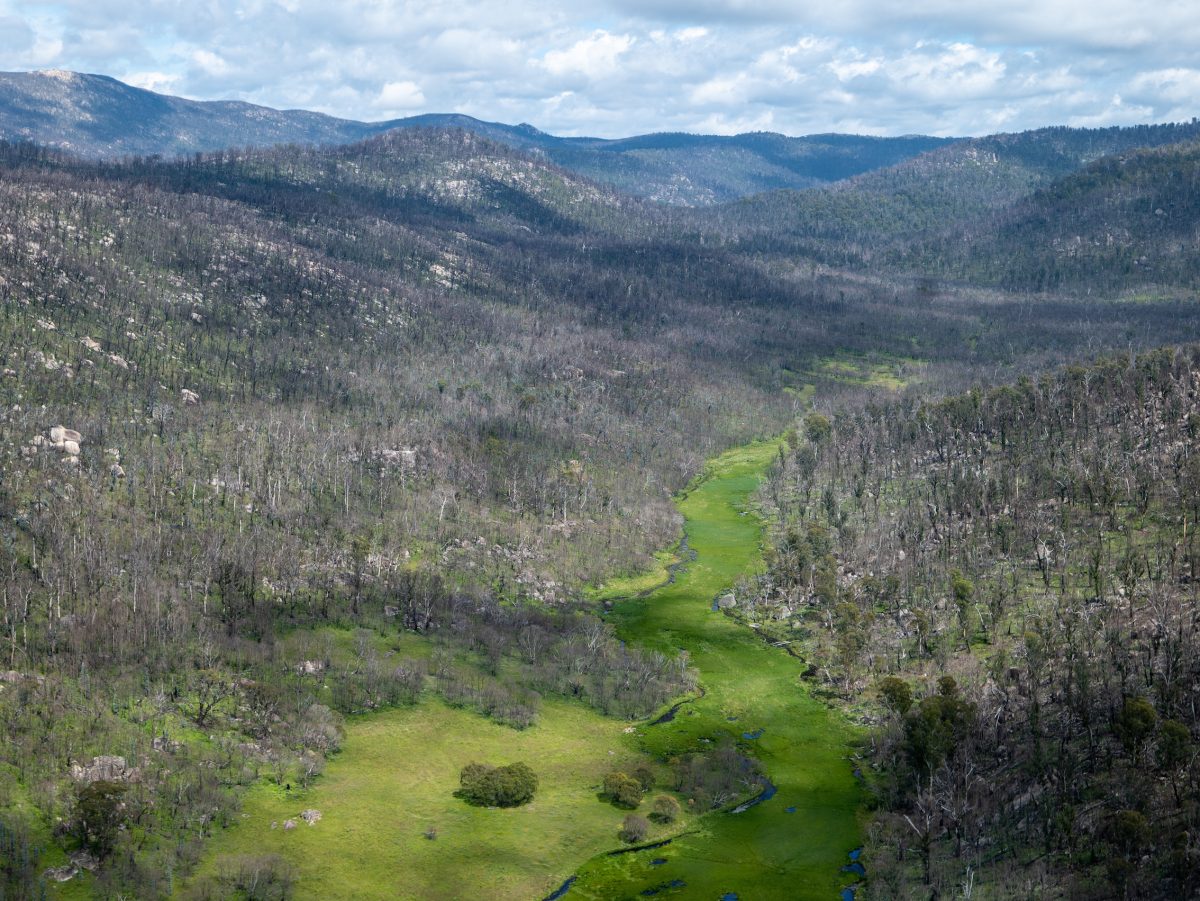
The Orroral Valley, almost 12 months on from the devastating bushfire in January 2020. Photo: ACT Parks and Conservation Service.
“Access by road over Rocky Crossing into Orroral Valley is not possible, restricting access to this area despite Orroral Valley not being closed formally.”
Construction on the road is set to finish by late April, paving the way for heavy machinery to move in and clear debris from the internal roads and trails and remove fallen trees from around the campground. The pit toilet block will also be replaced.
“It is anticipated that Orroral Valley will reopen to normal public access at the end of May 2023,” the spokesperson said.
As for the homestead and tracking station, both escaped the worst of the blaze. Orroral Homestead dates back to the 1860s, was built by grazers and is equipped with three rooms and a chimney at each end, plus a full-length veranda. A separate kitchen and staff quarters take up the rear of the property, while later owner and early property mogul Andy Cunningham added a stockyard and woolshed in the 1930s.
ACT Parks and Conservation has also been working closely with the Ngunnawal community on the restoration of the only currently known Aboriginal art site in the ACT at the nearby Yankee Hut.
“A number of preliminary on-site workshops and meetings with members from the Ngunnawal and local community have taken place and agreed broad concepts for the site’s restoration going forward,” the ACT Government spokesperson said.
“ACT Parks are now working with the community on advanced options for the replacement of the viewing platform, site access and the overall visitor experience.”
The Yankee Hut site remains formally closed while consultation with the Ngunnawal community continues. Further information on the opening arrangements will be made available to the public on the Parks ACT website.












